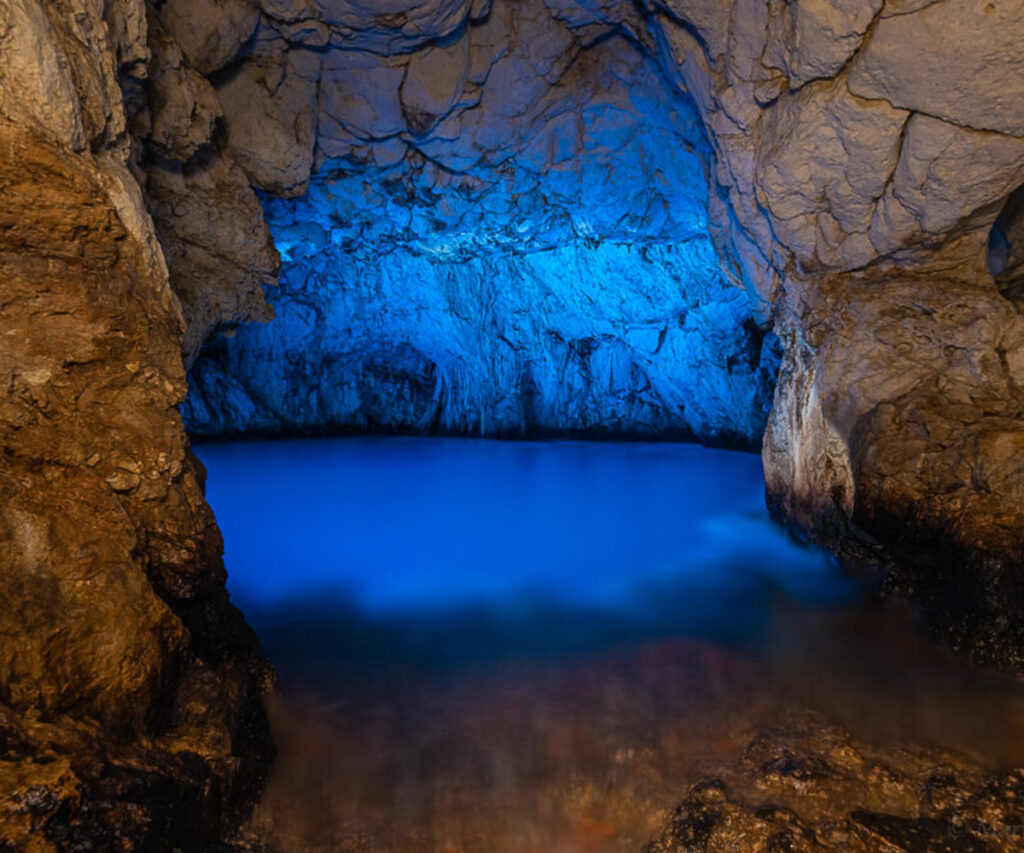The path connects the Belvedere of Punta Tragara to Matermania.
The views that you will enjoy in the walk are just breathtaking and you will feel like you can touch the famous Villa Malaparte and the Faraglioni. Then, you will also pass through the ancient Roman nymphaeum of the Grotto of Matermania.
Il consiglio è di iniziare il percorso partendo da Matermania.
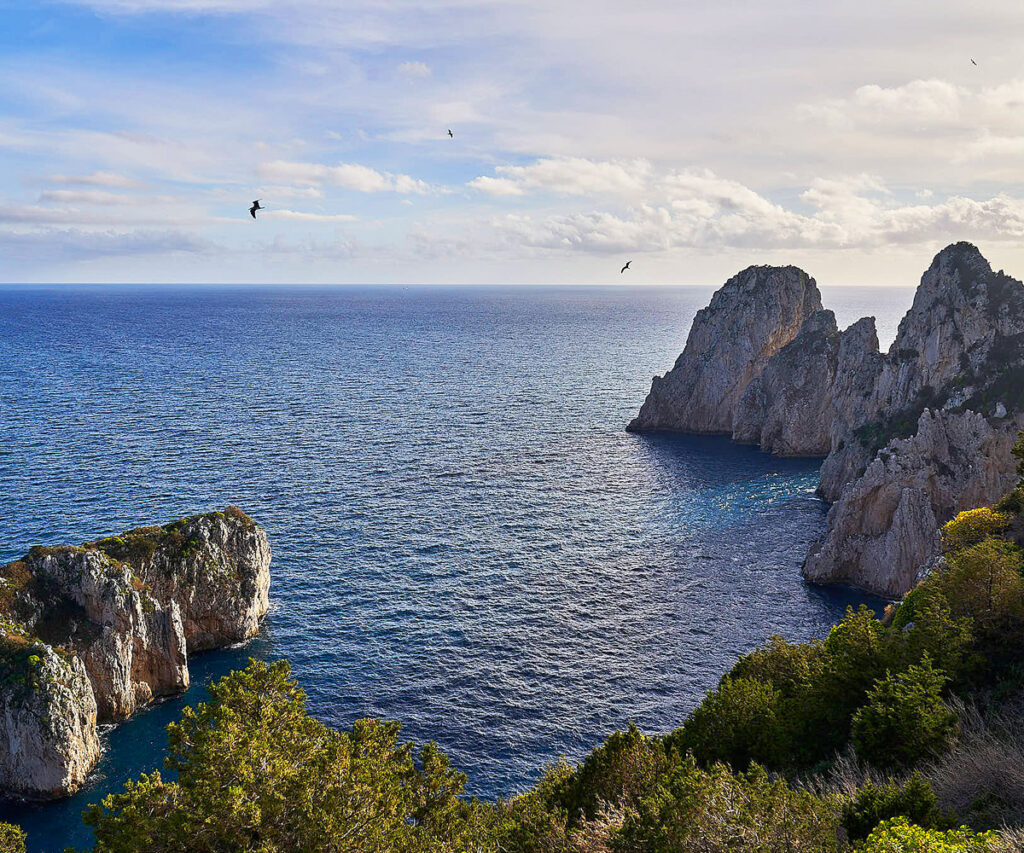

After buying the land right next to the ancient residence of Tiberius, Villa Jovis, the banker Mario Astarita decided to create this corner of paradise.
Its panoramic terraces, with privileged views of the Sorrento Peninsula, will take your breath away.
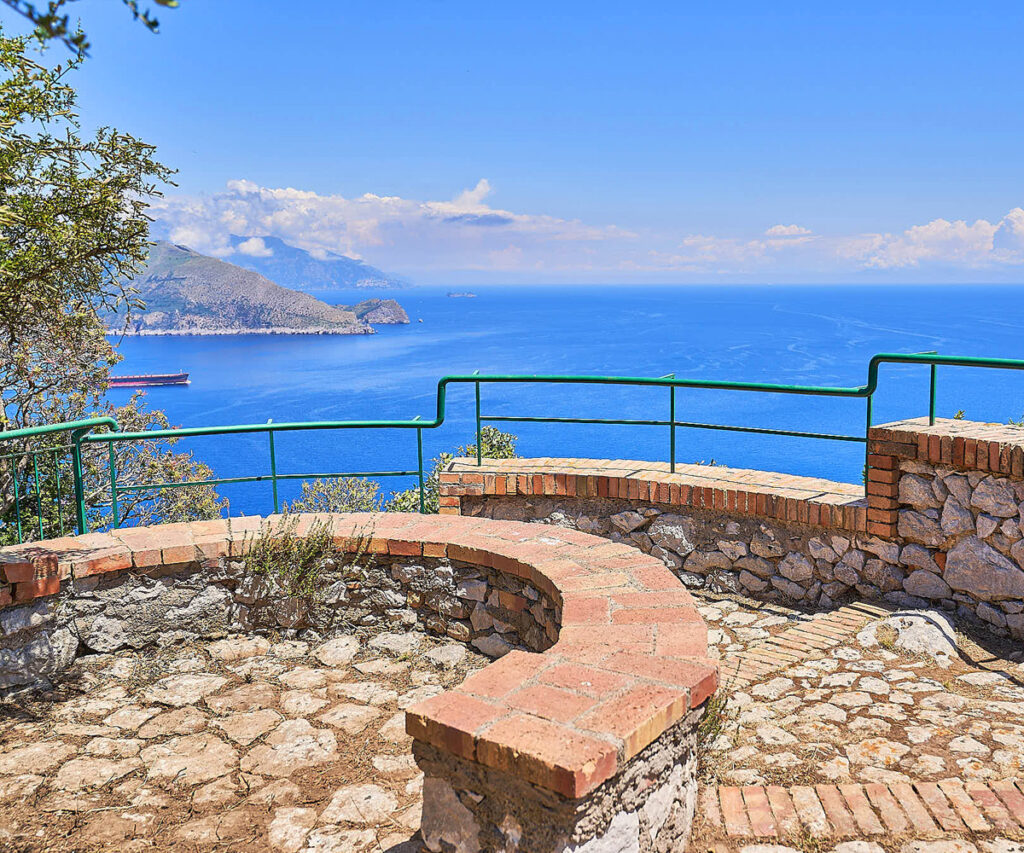
It is one of the twelve villas built in the Augusteo-Tiberian period. The map of the villa is still clearly visible, even if the walls are no longer standing. However, a medieval watchtower, located not so far from the villa, is still perfectly preserved.
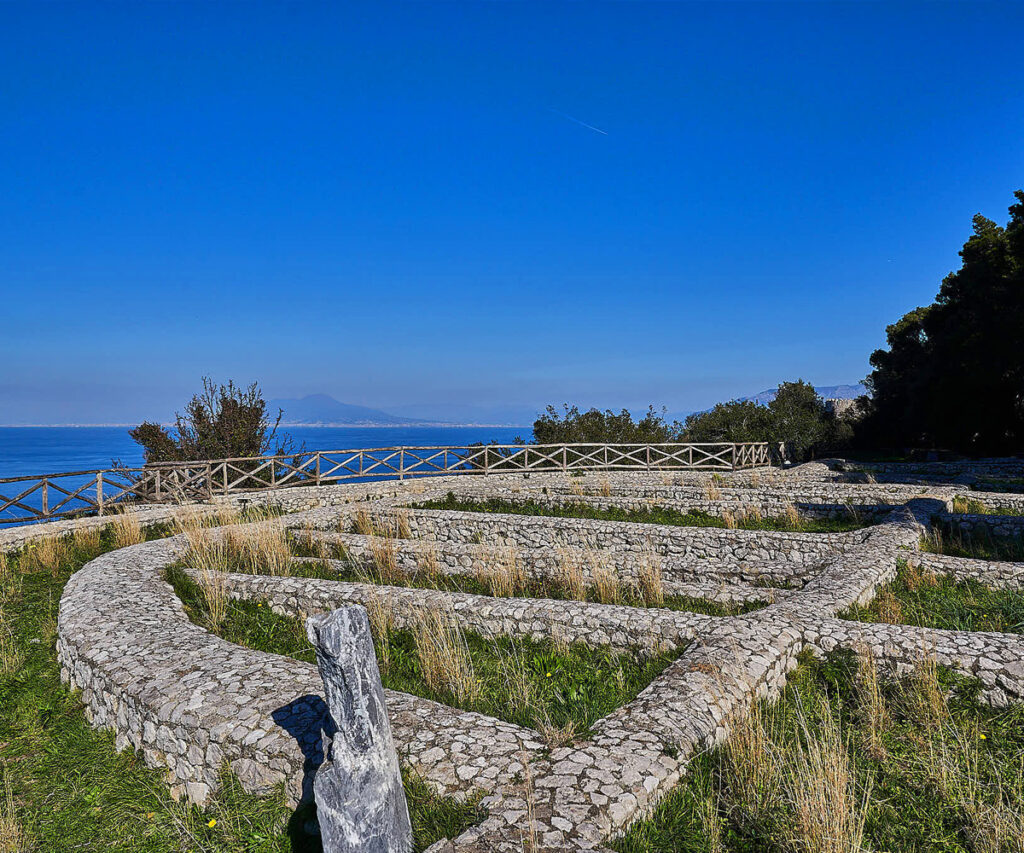
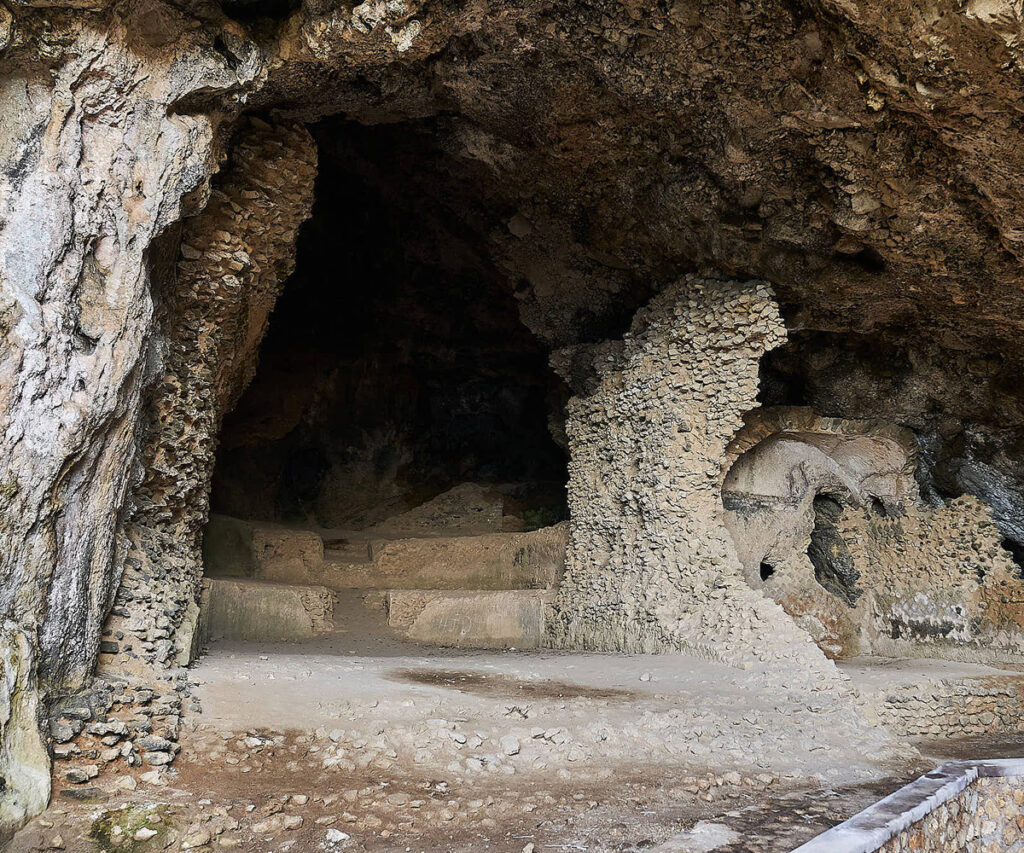
To get to this limestone cave, you will have to follow the path of Pizzolungo.
In Roman times, it was a nymphaeum dedicated to the cult of various deities, including the God Mithras, from whom it seems to have taken its name.
Probably one of the most famous places in the world, it is a karstic cavity barely visible from the outside. Inside, it is about twenty meters wide, for about sixty of length. It takes its name from the color of its waters, due to the light that enters from the entrance and especially from a larger, totally submerged cavity.
In Roman times, the cave was probably a nymphaeum and, in 1960, on its seabed, statues dated of Roman times were found. In later centuries it was feared by the inhabitants of the island, as it was thought to be home to evil spirits. Since the nineteenth century, it has been an inexhaustible source of inspiration for many artists and a destination for millions of tourists.
